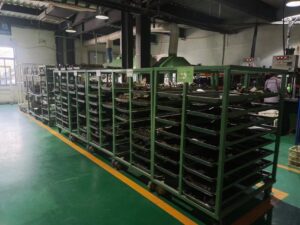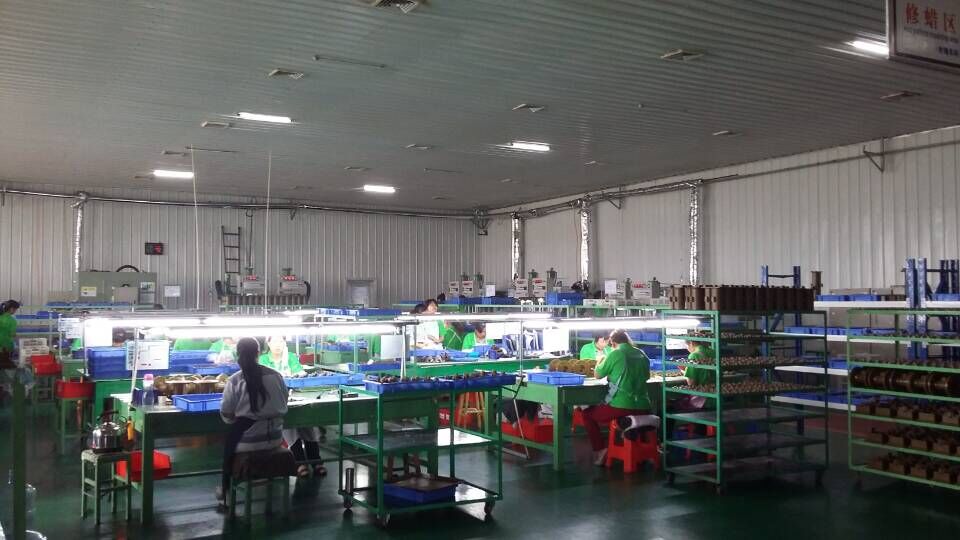All walks of life have different requirements for precision castings. To meet the needs, precision casting technology shows its wide adaptability, such as the diversity of materials, the complexity of shapes, the batch of production, and the accuracy of dimensions, In terms of uniformity, stability, and surface accuracy, there are new advances and improvements in these properties today.
Wax
Wax is the first link in the production of precision casting. As we all know, due to the development of casting production, the requirements for wax materials are correspondingly varied. The easiest way for producers is to choose from commercially available wax materials, they can prepare them themselves, or they can entrust professional factories to produce them as required. But no matter what kind of wax material, its required properties are the same, namely: melting point, freezing point, softening point, thermal conductivity, fluidity, shrinkage, shrinkage, strength, hardness, toughness, release, coating and hanging, Recyclability, dimensional stability and residual ash content after high-temperature burning, etc. Based on the production of specific castings, we choose a wax material, which requires the wax material to have certain characteristics in certain aspects, and it is also important to consider the cost. To meet the specific requirements of various castings, waxes are divided into liquid, semi-liquid, semi-solid, solid; filled and unfilled; water-soluble and water-insoluble; regenerated and non-regenerated; wax Moulding, casting system, bonding, repairing, sealing, resin wax, etc. As far as wax materials for wax models are concerned, there are also many varieties, and they are continuing to develop. Filler wax (FILLER WAX) is widely used, and the commonly used fillers are powdered polyethylene, polystyrene, organic acid, fatty acid, and starch. The added amount is 30% to 45% of the total amount. This kind of wax material has good thermal insulation, that is, it can be formed at a lower temperature, its fluidity is good, and the details of the wax mold can be reproduced. Styrene, adding isophthalic acid and adding three kinds of wax materials with trade name P2 FILLER, the time from 104 ℃ to 49 ℃ were 59 seconds, 62 seconds, and 99 seconds respectively, which shows that the type of filler is suitable for The influence of wax properties is greater. The shrinkage of this type of wax material is more than 5% smaller than that of the unfilled material. A problem closely related to the properties of wax materials is the influence of the preparation, use, and processing methods of wax materials on the properties of wax materials.
- Prevent the wax from overheating during the melting process
(1) Use an indirectly heated oil bath furnace and force the heat transfer oil to circulate, control the melting temperature within the range of 84 to 98 °C, and keep it in a state of stirring all the time. It also has the effect of preventing precipitation. Excessive temperature and local overheating will deteriorate the performance of the wax due to oxidation and carbonization of the wax. The performance of overheating is that the color of the wax changes, the inner wall of the wax bucket produces black spots, it is translucent due to the separation of the filler, and smoke or evaporation is generated in the wax bucket.
(2) To remove impurities and moisture, the wax must be heated to above the melting point of the wax, usually controlled below 120 °C, to ensure that the wax has a certain flow ability to remove impurities, and its moisture content is also It will evaporate with the agitation of the stirrer.
(3) For the wax-pressed rod used under the heat preservation of the heat preservation cylinder, the heating temperature only needs to be 2~3 ℃ higher than the injection temperature.
(4) When the wax material is removed in the autoclave (pressure tank), the steam temperature can be as high as 150 °C or more. This condition is the main link that causes the performance of the wax material to deteriorate. Therefore, try to reduce the dewaxing temperature and reduce the dewaxing pressure. to maintain the properties of the wax.
- Keep the ambient temperature
In the wax mold-making room, whether it is winter or summer, the indoor temperature should be kept within 20-25, so that the size of the wax mold is in a stable environment, and at the same time, it is matched with the environmental conditions of the pulping and shell making process to ensure the quality of the shell.
(1) heating and heat preservation of wax material
The wax material enters the molding from the wax bucket under pressure, and cools and solidifies in the molding. In this process, the temperature difference is the main factor affecting the shape, size, and stability of the wax pattern. Therefore, the uniformity of the temperature of the wax barrel is extremely important when using the wax barrel to keep the wax material in the wax. wax buckets cannot produce sound wax patterns. For this reason, the wax barrel is usually heated and kept warm by a heat preservation tank, and the heat preservation tank can usually be set within 58-62 °C, which is slightly higher than the injection temperature. In a longer time, at least 8 hours after heating and homogenization can be used. The heat preservation tank is an oil bath heating device. The heat transfer oil circulates under the pressure of the oil pump so that the wax barrel is heated and kept warm at a uniform temperature. The temperature controller of the heat preservation tank can set the required temperature according to the needs. When the wax barrel with uneven temperature is pressed, the wax mold will have defects such as full filling, cold insulation, granular surface, flow pattern, and mesh pattern.
(2) the forming method of a wax mold
Different forming methods are produced according to the size, shape, and technical requirements of the casting. And different forming methods have different wax materials to match. From the power of pressing wax, there are manual, electric, pneumatic, hydraulic, etc.; from the pressure, there are low pressure, medium pressure, high pressure, etc.; from the wax state, there are liquid, semi-liquid, semi-solid, solid, etc.; from the pressure, Types include metal type, rubber type, plaster type, etc. From castings, there are industrial products, works of art, etc.
Wax pressing machine (wax pressing machine)
The wax material is pressed into a wax mold in the wax press, that is, the properties of the wax mold are largely restricted by the parameters of the wax press, which are directly related to the design, structure, and performance of the wax press. For example, for a vertical high-pressure semi-solid wax press, the wax temperature, injection pressure, injection time, cooling time, and molding temperature must be checked before the wax pressing operation. Then operate according to the regulations of the process card. The performance of the wax forming machine is mainly reflected in the process parameters it can adjust, including, manual, and automatic; wax barrel temperature adjustment, wax injection temperature adjustment; forming force adjustment, forming stroke adjustment; injection pressure Adjustment, injection speed adjustment, injection time adjustment; return speed adjustment, etc. For example, in some castings, there are two hole rings at each end of the wax mold. Since the connection between the hole ring and the body is relatively weak, micro-cracks are prone to occur at the connection. Defects are eliminated. It can be seen that the process parameters that can be adjusted by the wax press and its adjustment range, adjustment methods, and correct control are extremely important for the manufacture of qualified wax molds. The central part of the wax press is the wax cylinder. Its size is <100mm × 400mm, which is used to place wax sticks. The fully preheated wax sticks are put into the wax cylinder, the wax cylinder is heated by electricity, and the temperature is kept at the injection temperature. When the injection port of the molding is placed in the wax cylinder After the wax injection port (injection port) is opened (the wax injection port has an independent heating and heat preservation system), the oil pump can be started to drive the upper piston to move down to press the wax material into the mold; after maintaining the pressure for a certain time, fold the pressure type, remove the wax model. The main parameters of the whole process are: ① The temperature of the semi-solid wax material is controlled to be slightly higher than the injection temperature, usually 55 to 60 °C. To make the temperature of the wax cylinder uniform, the wax cylinder must stay in the heat preservation tank for 8 hours The above; ②The injection pressure is adjustable, usually, 214~218MPa ③The tightening force of the wax press is adjustable, usually, 310~315MPa ④The injection speed is implemented by the injection time, it is The shape of the mold is different, and it has a lot to do with the shrinkage of the wax mold, which affects the quality of the wax mold.






